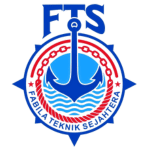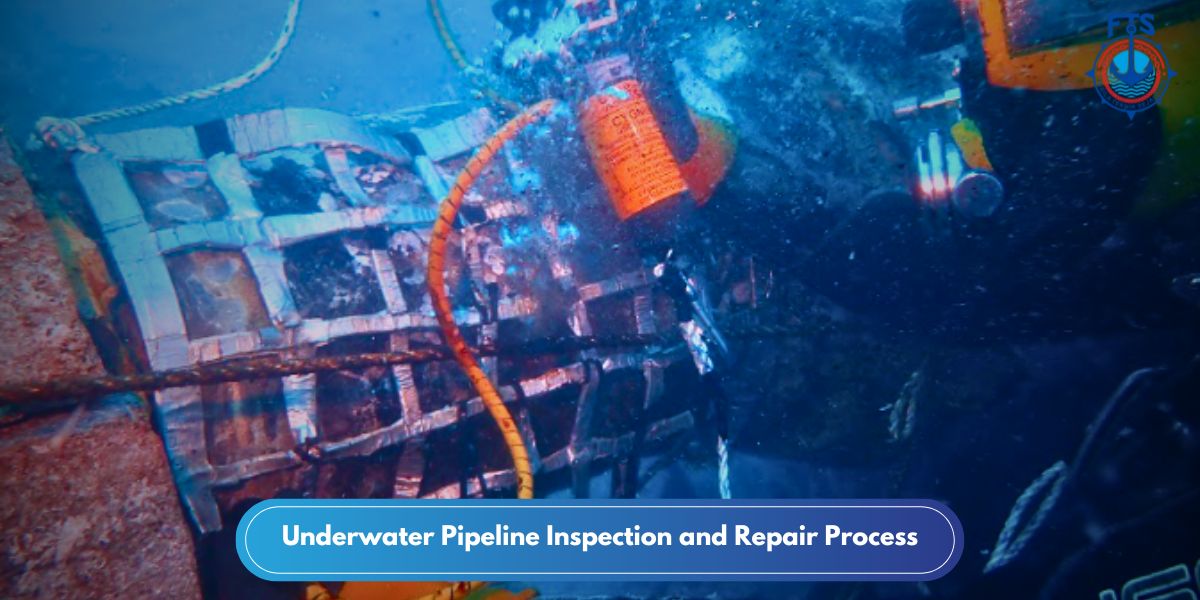Underwater pipeline inspection and repair play a critical role in ensuring the integrity and functionality of subsea infrastructure, especially in industries such as oil and gas, maritime, and offshore energy. One of the most effective inspection methods is UWILD (Underwater Inspection in Lieu of Drydocking), which enables detailed assessments without requiring assets to be removed from operation.
This article aims to educate industry professionals and stakeholders about the underwater pipeline inspection process, the role of UWILD, and the benefits of utilizing advanced technologies for subsea asset management.
Understanding Underwater Pipeline Inspection
Underwater pipeline inspection is the process of assessing the structural integrity, functionality, and safety of subsea pipelines used for transporting oil, gas, and other fluids. These inspections are performed to detect corrosion, leaks, physical damage, and marine growth that may compromise pipeline performance.
Various methods are used in underwater pipeline inspections, including visual inspections (conducted by divers or ROVs), non-destructive testing (NDT) to evaluate material integrity, and cathodic protection surveys to assess corrosion control measures. Regular inspections help ensure compliance with industry regulations, prevent costly failures, and extend the operational lifespan of subsea infrastructure.
The Importance of Pipeline Inspection
Underwater pipelines are crucial for transporting oil, gas, and other fluids across vast distances. However, they are exposed to extreme environmental conditions, including:
- Corrosion from seawater exposure
- Marine growth that affects structural integrity
- Physical damage due to underwater currents, seismic activity, or human activity
- Leaks and cracks that can lead to environmental hazards
To maintain operational safety, regular underwater pipeline inspections are necessary. These inspections help identify potential issues before they become major failures, ensuring compliance with industry regulations and minimizing downtime.
Underwater Pipeline Inspection Methods
Underwater pipelines play a crucial role in the transportation of oil, gas, and other fluids across vast distances in offshore environments.
However, they are exposed to extreme conditions, including corrosion, structural stress, and environmental hazards. To maintain their integrity, regular inspection is essential to detect potential issues before they lead to failures.
Various inspection methods, ranging from visual assessments to advanced non-destructive testing (NDT), are employed to ensure the safety and efficiency of subsea pipelines.
Below are the most commonly used underwater pipeline inspection techniques.
1. Visual Inspection (Diver-Based or ROV-Assisted)
Visual inspection is the most basic yet essential method for assessing the external condition of underwater pipelines. It involves trained commercial divers or Remotely Operated Vehicles (ROVs) equipped with high-definition cameras. The objective is to detect corrosion, cracks, marine growth, leaks, or external damage that may compromise pipeline integrity. ROVs offer significant advantages by reducing diver-related risks and enabling inspections at extreme depths.
2. Non-Destructive Testing (NDT)
NDT methods provide a detailed structural assessment without causing damage to the pipeline. These techniques include:
- Ultrasonic Testing (UT): Measures pipeline wall thickness and detects internal flaws using high-frequency sound waves.
- Magnetic Particle Inspection (MPI): Identifies surface cracks by applying magnetic fields and detecting disruptions in the field pattern.
- Eddy Current Testing (ECT): Uses electromagnetic fields to find cracks or corrosion in conductive materials.
NDT is widely used for detecting early signs of material degradation and ensuring compliance with industry regulations.
3. Cathodic Protection Surveys
Cathodic protection is a technique used to prevent corrosion in submerged metal structures, including pipelines. This method assesses the effectiveness of two types of corrosion control systems:
- Sacrificial Anodes: Metal plates that corrode instead of the pipeline.
- Impressed Current Cathodic Protection (ICCP): Uses an external power source to supply protective electrical currents.
Regular cathodic protection surveys ensure these systems are functioning correctly, preventing premature pipeline deterioration.
4. Pipeline Free Span Analysis
Pipelines laid on the seabed can experience sections where they are not supported by the ground, known as free spans. These unsupported sections may be caused by:
- Seabed erosion and shifting currents
- Seismic activity or underwater disturbances
Free spans can lead to stress concentrations, vibration-induced fatigue, and potential structural failure. Inspections using multibeam sonar, laser scanning, or ROV-mounted sensors help determine whether corrective actions, such as pipeline stabilization, are required.
5. Leak Detection Surveys
Leak detection is critical in preventing environmental pollution, product loss, and operational downtime. Various technologies are used to identify leaks, including:
- Acoustic sensors that detect changes in sound patterns caused by escaping gas or liquid.
- Infrared and thermal imaging to identify temperature variations indicating leakage points.
- Chemical tracers injected into pipelines, allowing external sensors to detect leaks.
6. Smart Pigging (Inline Inspection – ILI)
Smart pigging, also known as Inline Inspection (ILI), is an advanced method that assesses the internal condition of pipelines. Pipeline Inspection Gauges (PIGs) travel through the pipeline, collecting data on:
- Wall thickness variations due to corrosion.
- Cracks, dents, and ovality changes.
- Blockages or debris accumulation.
This method provides high-accuracy results without external intervention, making it a preferred option for internal pipeline assessments.
7. Bathymetric and Sonar Surveys
Bathymetric and sonar surveys provide a detailed map of the seabed and surrounding environment to ensure pipeline stability. Technologies used include:
- Multibeam Echo Sounders (MBES): Creates a 3D representation of the seabed.
- Side-Scan Sonar: Produces high-resolution images of underwater objects and potential obstructions.
These surveys help identify seabed shifts, sediment accumulation, and external threats to pipeline integrity.
Ensuring the integrity of subsea pipelines requires a combination of advanced inspection techniques to detect structural issues, corrosion, and environmental impacts.
Each method provides unique insights into the condition of the pipeline, helping operators make informed maintenance decisions. Regular inspections not only enhance safety and regulatory compliance but also extend the operational lifespan of subsea assets.
The Role of UWILD in Pipeline Inspection

Underwater pipelines play a crucial role in offshore oil and gas transportation, making regular inspections essential for safety and operational efficiency. Underwater Inspection in Lieu of Drydocking (UWILD) has emerged as a key solution for assessing subsea infrastructure without disrupting operations.
By leveraging advanced inspection technologies, including Remotely Operated Vehicles (ROVs), UWILD allows for detailed structural evaluations, corrosion detection, and regulatory compliance checks. This method is widely used for ensuring the longevity and integrity of offshore platforms, FPSOs, and subsea pipelines.
What is UWILD?
Underwater Inspection in Lieu of Drydocking (UWILD) is a method used to inspect subsea structures, including pipelines, without removing them from operation. This technique is commonly used for:
- Offshore platforms
- Floating production storage and offloading (FPSO) units
- Subsea pipelines and risers
Advantages of UWILD
- Minimizes downtime by allowing inspections without halting operations.
- Cost-effective compared to traditional drydocking.
- Enhanced safety as it eliminates the risks of moving heavy assets.
- Accurate assessments using ROVs and advanced inspection tools.
The Use of ROVs in Underwater Inspections
Advancements in underwater technology have significantly improved the way pipeline inspections are conducted. One of the most impactful innovations is the use of Remotely Operated Vehicles (ROVs), which provide efficient, accurate, and safer alternatives to human divers.
These robotic systems allow for comprehensive subsea inspections, ensuring that underwater pipelines remain in optimal condition while minimizing operational risks. PT. Fabila Teknik Sejahtera integrates ROV technology into its inspection processes to enhance efficiency, reduce downtime, and provide real-time data for effective decision-making.
What are ROVs?
Remotely Operated Vehicles (ROVs) are robotic systems used for underwater operations where human divers may not be safe or practical. PT. Fabila Teknik Sejahtera utilizes ROV technology for detailed pipeline inspections, ensuring precise and efficient assessments.

Benefits of ROV-Based Inspections
- High-Resolution Imaging. Provides clear visuals of pipeline conditions, allowing for precise damage assessments.
- Extended Depth Capabilities. Can operate at depths beyond human diver limits, ensuring thorough inspections at any depth.
- Real-Time Data Transmission. Engineers and analysts can monitor inspections live and make immediate decisions.
- Reduced Operational Risks. Eliminates the need for human divers in hazardous environments.
The integration of ROV technology into underwater inspections has streamlined the process, providing faster and more accurate assessments. As these robotic systems continue to evolve, their role in subsea asset management is becoming increasingly vital.
Understanding how they contribute to effective pipeline inspections leads to a deeper appreciation of their role in underwater pipeline repair techniques.
Underwater Pipeline Repair Techniques
Underwater pipelines are constantly exposed to harsh environmental conditions, making them vulnerable to structural damage, corrosion, and leaks. Regular inspections help identify issues early, but when problems arise, effective repair techniques must be implemented to restore pipeline integrity and prevent operational failures. Below are some of the most commonly used methods for underwater pipeline repair.
Common Pipeline Issues Requiring Repair
Once an issue is detected during inspection, necessary repairs must be conducted to prevent operational failures. Common pipeline problems include:
- Leaks and ruptures
- Structural deformation due to seabed shifts or external impact
- Corrosion damage affecting pipeline thickness.
When damage is identified, selecting the appropriate repair technique is crucial to ensuring pipeline longevity and reliability. Each method varies depending on the severity of the issue, the location of the pipeline, and environmental conditions. The following section outlines the most effective repair techniques used in underwater pipeline maintenance.
Repair Methods
Underwater pipeline repair requires a strategic approach to address structural issues while minimizing operational downtime. The selection of a repair method depends on the severity of the damage, environmental conditions, and the pipeline’s operational status. Below are the most effective techniques used in subsea pipeline maintenance.
- Clamp and Sleeve Repairs. Used to seal minor leaks and reinforce weakened pipeline sections.
- Pipeline Coating and Wrapping. Applies protective layers to prevent further corrosion and mechanical damage.
- Replacement of Damaged Sections. For severe cases, affected pipeline sections are cut and replaced with new ones.
- Hot Tapping and Line Stopping. Allows modifications or repairs without shutting down operations.
The complexity of offshore operations requires expertise, advanced technology, and a strong commitment to safety and regulatory compliance. That is why choosing the right partner for underwater pipeline inspection and repair is essential to ensuring the safety, efficiency, and longevity of subsea infrastructure.
Why Choose PT. Fabila Teknik Sejahtera?
PT. Fabila Teknik Sejahtera is a leading company specializing in underwater inspection and repair, providing high-quality services using advanced technologies, including Remotely Operated Vehicles (ROVs). Our services include:
- Comprehensive UWILD inspections with certified specialists.
- State-of-the-art ROV technology for deep-water assessments.
- Highly trained dive teams for specialized repairs.
Certified and Experienced Professionals
The company employs highly skilled engineers, certified commercial divers, and ROV operators who adhere to international industry standards. Their vast experience ensures accurate inspections and reliable repairs for all underwater pipeline needs.
Commitment to Safety and Compliance
PT. Fabila Teknik Sejahtera prioritizes safety and regulatory compliance, ensuring all projects meet:
- International maritime regulations (IMCA, ABS, DNV-GL)
- Industry safety protocols
- Environmental protection guidelines
Cost-Effective Solutions
By leveraging UWILD and ROV-assisted inspections, the company offers cost-efficient solutions without compromising quality. Their approach minimizes downtime, reduces operational risks, and enhances the longevity of subsea infrastructure.
Feel Free to Discuss with Us
As a trusted partner, PT. Fabila Teknik Sejahtera delivers high-quality UWILD services, underwater pipeline inspections, and repair solutions. For professional underwater inspection and repair services, feel free to contact us.

